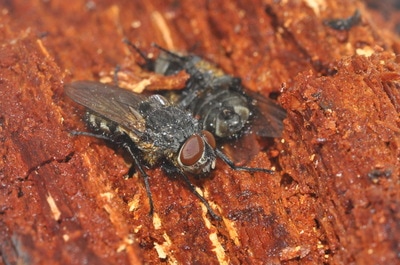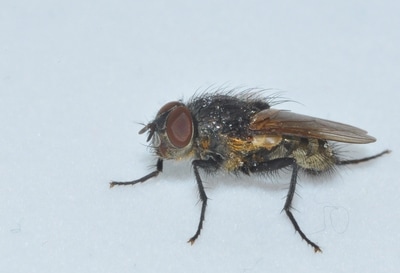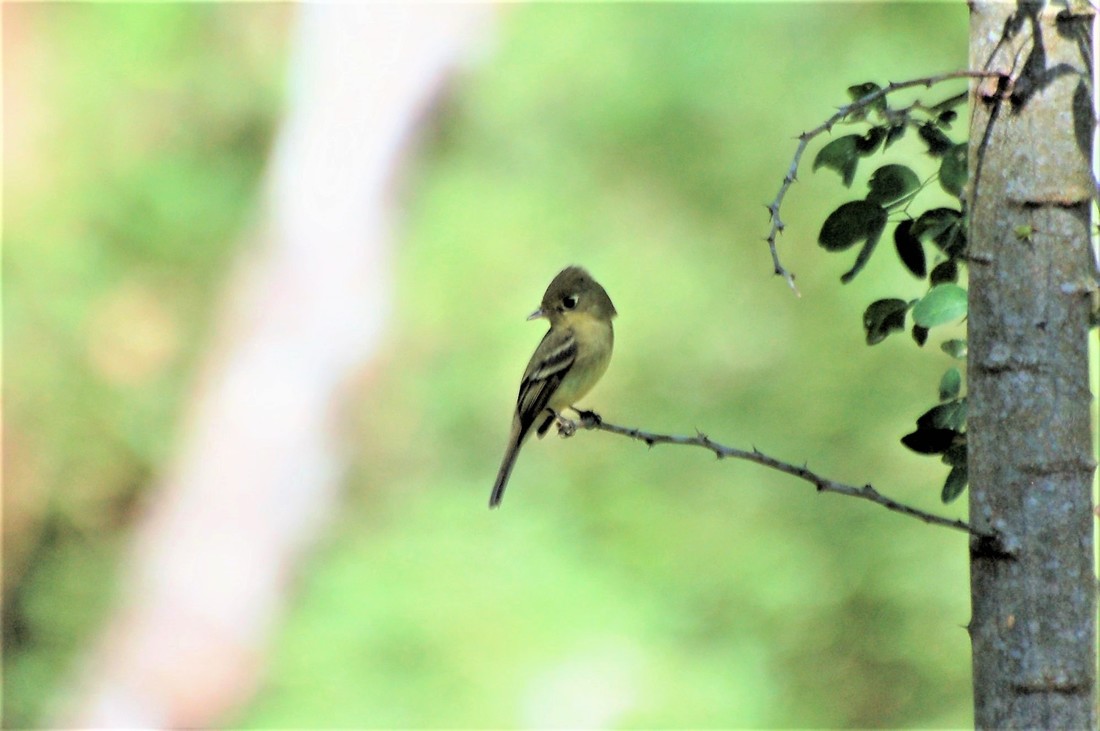|
Pulling apart a log one afternoon I was very surprised to find a neat little row of flies in a hollow groove hibernating. When I brought them into the warmth of the house he was soon awake and alert. You can tell that it is a male by the closeness of the eyes at the top of his head. The cluster flies are just a little bit larger than house or blow flies, when at rest their wings fold over each other and there is a patch of golden hair under their wings. They will winter in houses in attics or any warm space and emerge when it is warm and be generally annoying - but that is really their only vice as they don't bite, infest food and they aren't known to transmit diseases. They lay their eggs in the spring outside in cracks in the soil. The larvae or maggots are parasites on earthworms They wait for one to slither by and then burrow in to feed. In four to five weeks the life cycle is complete. There also are reports that they will use caterpillars as a host.
For a long time there was thought to be only one species of Pollenia in North American but when there was a close examination of the collections six species were determined to occur here. The key, Cluster Flies (Calliphoridae: Polleniinae: Pollenia) of North America by Jewiss-Gaines et. al. (2012) has photographs of each and distributions. Even with this and a lot of peering at leg hairs I am not totally convinced which species that this was. I *think* that it is Pollenia rudis. This is the more common one and the one that species that was considered to be in North America prior to the splitting. All six species have been found in B.C. It is assumed that cluster flies were introduced from their native Europe in soil in the ballasts of ships with the earthworm.
0 Comments
The Pacific-slope Flycatcher (Empidonax difficilis)is more often heard than seen here at Leaning Oaks. It's call a distinct upslurred "seewit" is a common sound of spring in our mixed woods of Douglas-fir, Big-leaf Maple and Garry Oak. a It is a summer breeder here, with our earliest records in the first week of May and the latest birds lingering until the second week of September. Empidonax flycatchers are difficult to identify, although for us the Pacific-slope is the yellowest of the flycatchers here and the only one with a tear-drop shaped eye ring. Elsewhere however, the Pacific-slope is very difficult to distinguish from the Cordilleran Flycatcher and in recent trips to western Mexico where both species winter, we were reduced to recording them as "Western" Flycatchers, unless they were calling.
|
AuthorsTwo biologists on a beautiful property armed with cameras, smart phones and a marginal knowledge of websites took up the challenge of documenting one species a day on that property. Join along! Posts and photographs by Leah Ramsay and David Fraser (unless otherwise stated); started January 1, 2014. Categories
All
Archives
May 2025
|



 RSS Feed
RSS Feed